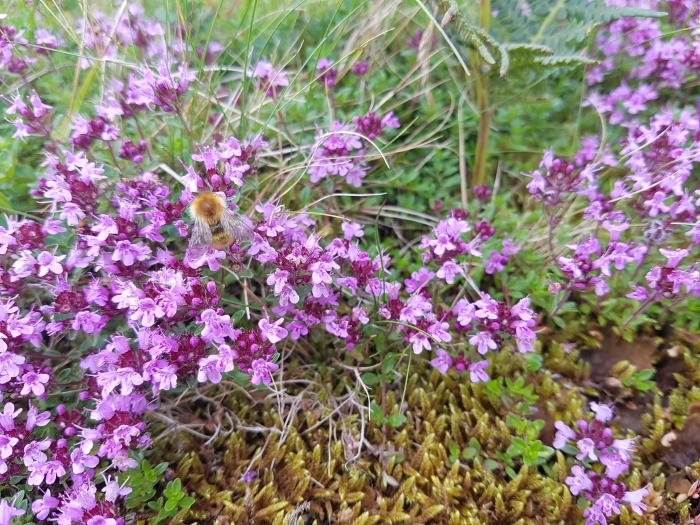Woolly Thyme
(Thymus pseudolanuginosus)
Woolly Thyme (Thymus pseudolanuginosus)
/
/

Ian Adams
CC BY 4.0



















Estimated Native Range
Summary
This plant is valued for its drought tolerance and ability to thrive in poor soils, making it an excellent choice for xeriscaping and low-maintenance gardens. It is commonly used as a ground cover, in rock gardens, and between stepping stones where its fragrant leaves can be appreciated when crushed underfoot. Woolly Thyme prefers full sun and well-drained soil, and it is relatively pest and disease-free, although it can suffer from root rot in overly moist conditions. Its culinary uses are limited due to its hairy foliage, but it remains a popular ornamental variety for its texture and flowering habit.CC BY-SA 4.0
Plant Description
- Plant Type: Herb
- Height: 0.3-0.5 feet
- Width: 0.2-0.4 feet
- Growth Rate: Moderate
- Flower Color: Pink, Purple
- Flowering Season: Summer
- Leaf Retention: Evergreen
Growth Requirements
- Sun: Full Sun
- Water: Low, Medium
- Drainage: Fast, Medium
Common Uses
Bank Stabilization, Bee Garden, Bird Garden, Border Plant, Butterfly Garden, Deer Resistant, Drought Tolerant, Fire Resistant, Fragrant, Groundcover, Low Maintenance, Potted Plant, Rabbit Resistant, Rock Garden, Street Planting
Natural Habitat
native to rocky, calcareous soil sites in Europe
Other Names
Common Names: Thymes Woolly Thyme, Creeping Thyme, Mother-Of-Thyme, Norsk Timian, Islandstimjan
Scientific Names: , Thymus pseudolanuginosus, Thymus praecox subsp. britannicus, Thymus praecox subsp. arcticus, Thymus praecox var. arcticus, Thymus drucei, Thymus polytrichus subsp. britannicus, Thymus arcticus, Thymus britannicus, Thymus praecox subsp. penyalarensis
GBIF Accepted Name: Thymus praecox subsp. britannicus (Ronniger) Holub